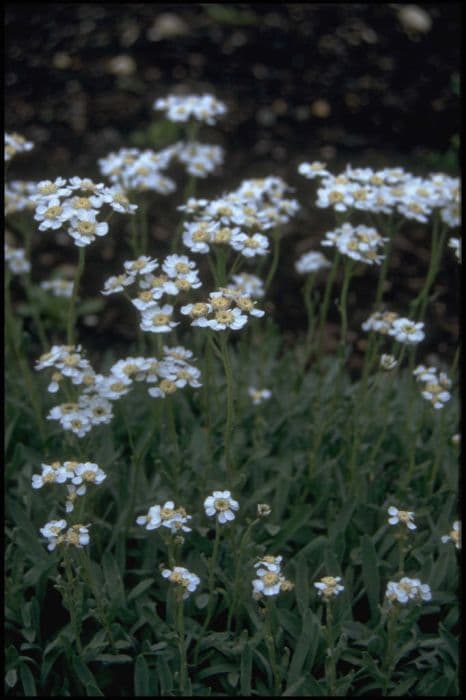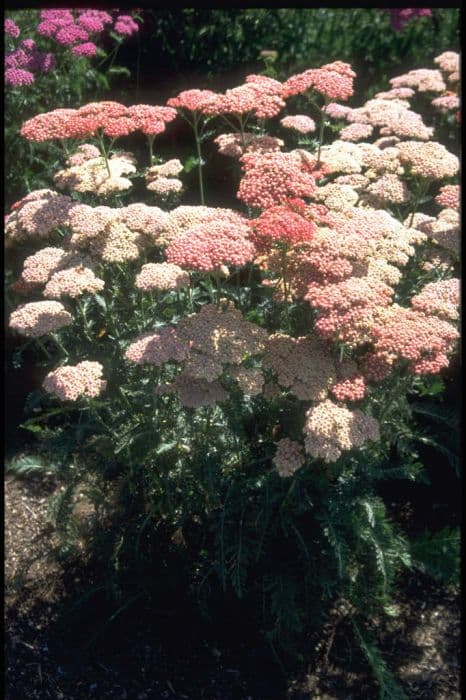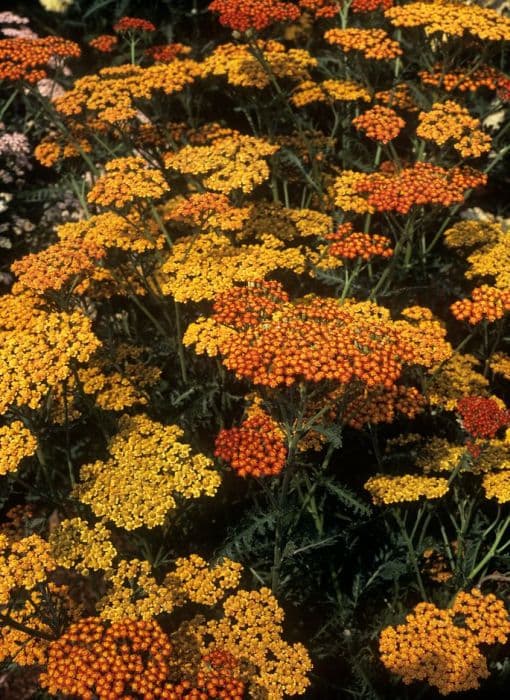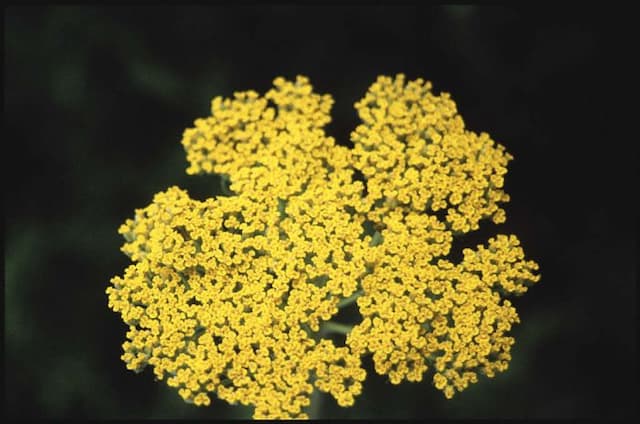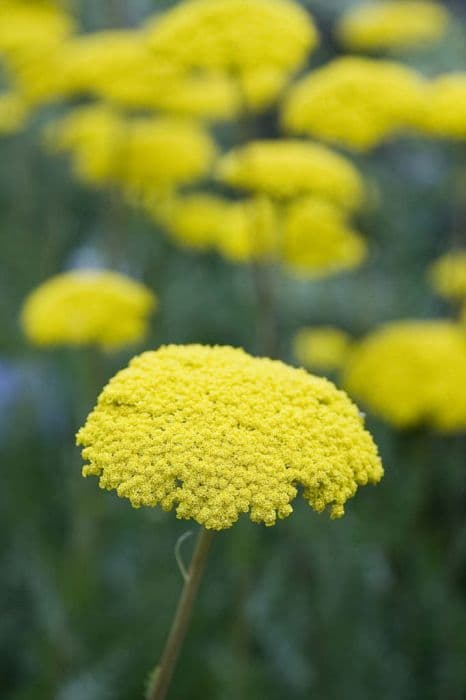Dusty Miller Jacobaea maritima 'Cirrus'

ABOUT
Jacobaea maritima 'Cirrus', commonly known as Dusty Miller, boasts soft, felt-like foliage that brings a unique texture to gardens and landscapes. The leaves of this plant are deeply lobed and possess a silvery-grey color that can almost be described as white in full sunlight. This striking hue is due to fine, hair-like structures that cover the surfaces, which also give Dusty Miller its notable fuzzy appearance. The silver sheen of the leaves provides a beautiful contrast when paired with other green-hued plants or colorful flowers. The overall growth habit of Dusty Miller 'Cirrus' forms a bushy, mounding clump, creating an attractive ground cover or edging plant. It rarely flowers, but when it does, it can produce small yellow flowers that often go unnoticed compared to the dramatic foliage.
About this plant
 Names
NamesFamily
Asteraceae.
Synonyms
Silver Ragwort, Dusty Miller, Silver Dust.
Common names
Senecio cineraria, Senecio maritimus, Cineraria maritima, Jacobaea maritima.
 Toxicity
ToxicityTo humans
Dusty miller, also known as Jacobaea maritima 'Cirrus', contains pyrrolizidine alkaloids, which can be toxic when ingested. These compounds may cause liver damage and are particularly harmful in large quantities. Symptoms of poisoning can include gastrointestinal upset, liver failure, and nervous system effects such as restlessness and excitability. Chronic or repeated ingestion can lead to cumulative liver damage and potentially severe health consequences.
To pets
Dusty miller poses a risk of toxicity to pets if ingested due to the presence of pyrrolizidine alkaloids. Symptoms of poisoning in pets can include vomiting, diarrhea, lethargy, appetite loss, liver failure, and neurological signs like tremors or seizures. Chronic exposure or ingestion can lead to significant liver damage and potentially life-threatening issues. It is important to prevent pets from ingesting this plant.
 Characteristics
CharacteristicsLife cycle
Perennials
Foliage type
Evergreen
Color of leaves
Silver
Height
1-2 feet (30-60 cm)
Spread
1-2 feet (30-60 cm)
Plant type
Herb
Hardiness zones
8
Native area
Mediterranean
Benefits
 General Benefits
General Benefits- Drought Tolerance: Silver ragwort is highly tolerant to dry conditions, making it an excellent choice for water-wise gardens and xeriscaping.
- Low Maintenance: This plant requires minimal care once established, needing only occasional watering and no regular fertilization.
- Coastal Resilience: Being a coastal plant, silver ragwort is well-suited to seaside gardens due to its tolerance to salt spray and sandy soils.
- Pest Resistance: Silver ragwort is resistant to many common garden pests, reducing the need for chemical pesticides.
- Décor Versatility: With its striking silvery foliage, this plant can be used as a contrast against green-leaved plants and suits various garden styles, from modern to cottage.
- Erosion Control: Its ability to spread and form a mat makes silver ragwort useful for stabilizing soil and preventing erosion on slopes and banks.
- Seasonal Interest: The silver-grey foliage provides visual interest throughout the growing season, even when the plant is not in bloom.
- Deer Resistance: Silver ragwort is generally not preferred by deer, making it a good choice for gardens in areas with high deer populations.
- Attracts Pollinators: When in bloom, the yellow flowers of silver ragwort attract beneficial insects like bees and butterflies to the garden.
- Edging and Border Plant: Its compact and mounding growth habit makes it an ideal choice for edging paths and borders.
 Medical Properties
Medical Properties- This plant is not used for medical purposes.
 Air-purifying Qualities
Air-purifying QualitiesThis plant is not specifically known for air purifying qualities.
 Other Uses
Other Uses- Silver Ragwort is used in companion planting to repel pests around vegetable gardens due to its strong scent and properties that many garden pests find disagreeable.
- In arts and crafts, the felt-like texture of Silver Ragwort foliage is used to add interesting textures to natural collages and botanical art pieces.
- Silver Ragwort can be used as a natural dye source for textiles, giving a range of yellow and green shades depending on the mordant used.
- Some people plant Silver Ragwort in pet areas or dog runs as it is sturdy enough to stand up to light traffic and has a smell that can help mask pet odors.
- The silver foliage of Silver Ragwort can be included in decorative wreaths and floral arrangements, where it adds a contrasting color and texture.
- Photographers sometimes use Silver Ragwort as a background plant in their images due to its silvery foliage that highlights the main subject.
- Silver Ragwort can be used as insulation in small-scale projects like outdoor model houses due to its dense foliage.
- The reflective property of the leaves of Silver Ragwort can be utilized in the garden to reflect light onto shadier plants that need a bit more light.
- Silver Ragwort leaves can be scattered among bookshelves or in linen closets as a natural deterrent for moths and silverfish.
- Landscapers may use Silver Ragwort for xeriscaping — landscaping that reduces or eliminates the need for irrigation — due to its drought-tolerant nature.
Interesting Facts
 Feng Shui
Feng ShuiThe Dusty Miller is not used in Feng Shui practice.
 Zodiac Sign Compitability
Zodiac Sign CompitabilityThe Dusty Miller is not used in astrology practice.
 Plant Symbolism
Plant Symbolism- Purity: Jacobaea maritima 'Cirrus', commonly known as Dusty Miller, is often associated with its striking silvery-white foliage, symbolizing cleanliness and purity.
- Protection: Dusty Miller has a fine, woolly texture, which is thought to symbolize protection and the ability to shield from harm, making it a popular plant in traditional gardens and folklore.
- Perseverance: The hardy nature of Dusty Miller, being drought-resistant and able to thrive in various conditions, represents perseverance and the ability to withstand life's challenges.
 Water
WaterDusty Miller prefers even moisture but can tolerate drought once established. Water the plant thoroughly when the top inch of soil feels dry to the touch, which will typically be about once a week. Be cautious not to overwater, as this can encourage root rot. Depending on the size of your plant and the environmental conditions, you might need about half a gallon of water every watering session during the growing season. During winter, reduce watering frequency as plant growth slows down.
 Light
LightDusty Miller thrives in full sun but can also tolerate partial shade. The best spot for this plant is an area that receives at least 6 to 8 hours of direct sunlight daily. Avoid deep shade as it can cause the plant to become leggy and lose its compact shape.
 Temperature
TemperatureDusty Miller prefers moderate conditions and can survive temperatures as low as 20°F and as high as 80°F. However, the ideal temperature range is between 60°F and 75°F, where the plant will grow most vigorously. Protect Dusty Miller from frost to prevent damage to the foliage.
 Pruning
PruningPruning Dusty Miller is essential to maintain its shape and encourage denser foliage. Prune in the early spring or late winter by cutting back the plant to half its size to promote new growth. Deadheading, or removing spent flower heads, can be done as needed to keep the plant looking tidy.
 Cleaning
CleaningAs needed
 Soil
SoilDusty miller thrives in well-draining soil with moderate fertility and a neutral to slightly alkaline pH, ranging from 7.0 to 7.5. A mix of equal parts loamy garden soil, peat or compost, and coarse sand or perlite creates an optimal environment for its roots. Regular checking of soil pH and amendments with lime can help maintain the desired conditions.
 Repotting
RepottingDusty miller should be repotted every 1-2 years to refresh the soil and accommodate growth. It is best to repot in spring before the growing season begins, using a slightly larger pot to allow for new root development.
 Humidity & Misting
Humidity & MistingDusty miller prefers a dry climate with low to average humidity levels. It tolerates arid conditions well and does not require high humidity to thrive.
 Suitable locations
Suitable locationsIndoor
Place in bright light, avoid overwatering, low humidity.
Outdoor
Full sun to part shade, well-drained soil, space out plants.
Hardiness zone
7-10 USDA
 Life cycle
Life cycleSilver ragwort 'Cirrus' begins its life cycle when seeds germinate in spring, ideally in well-drained soil and full sun to partial shade conditions. Seedlings emerge and establish a robust root system while developing rosettes of silver-gray, felt-like foliage. As the plant matures, it forms a bushy clump, typically reaching up to 60 cm in height. During the summer months, yellow, daisy-like flowers bloom, attracting a variety of pollinators. After flowering, seeds are produced and disseminated by wind or with the help of animals, allowing the cycle to begin anew. The silver ragwort 'Cirrus' is a short-lived perennial and may complete its life cycle within a few years, at which point it dies back, but may also self-seed and proliferate in suitable growing conditions.
 Propogation
PropogationPropogation time
Spring to Summer
The Dusty Miller (Jacobaea maritima 'Cirrus') is commonly propagated by seed. The ideal time to sow Dusty Miller seeds is in late winter to early spring, indoors, around 6 to 8 weeks before the last expected frost. Using a seed starting tray filled with a well-draining seed starting mix, the tiny seeds are sprinkled onto the surface and lightly pressed into the soil but not covered because they need light to germinate. The tray should then be kept moist and in a bright, warm location, with temperatures between 65 to 75 degrees Fahrenheit (about 18 to 24 degrees Celsius). Germination usually occurs within 7 to 14 days. After the seedlings have developed their first set of true leaves and are large enough to handle, they can be transplanted into individual pots before being acclimated to outdoor conditions and eventually planted out in the garden after all risk of frost has passed.
